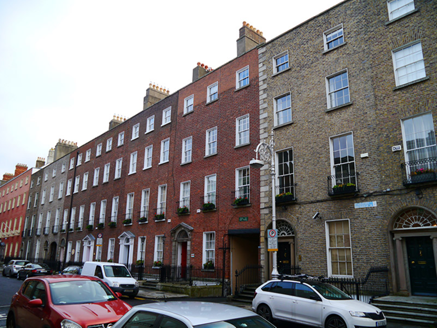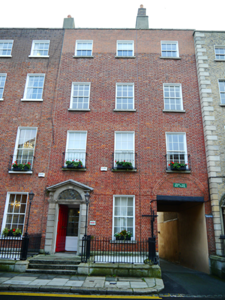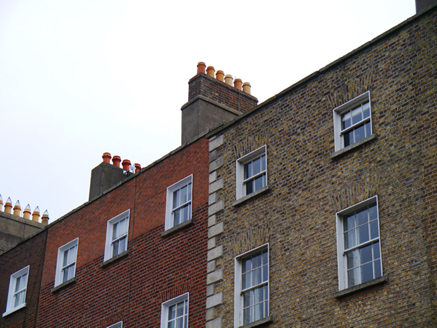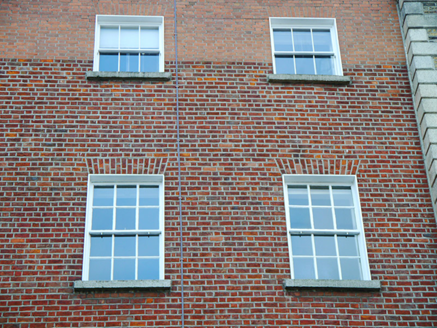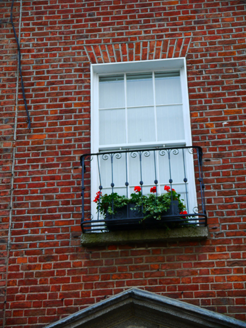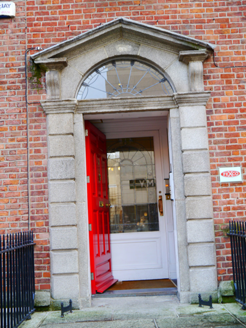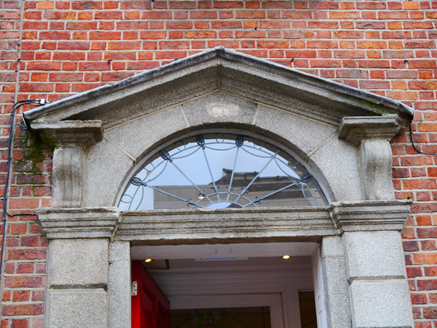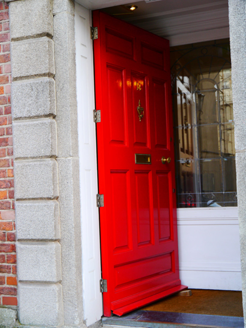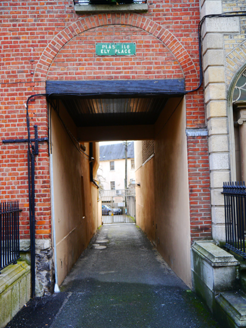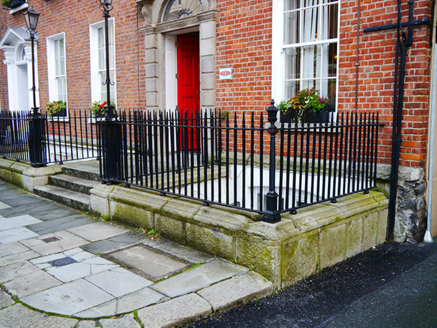Survey Data
Reg No
50930006
Rating
Regional
Categories of Special Interest
Architectural, Artistic, Historical
Original Use
House
In Use As
Office
Date
1770 - 1775
Coordinates
316336, 233262
Date Recorded
20/10/2015
Date Updated
--/--/--
Description
End-of-terrace three-bay four-storey over basement former townhouse with integral carriage-arch, built 1771, as part of a terrace of four (50930006-9). L-plan with bow to northern bays of rear (east) elevation. Now in commercial use as offices. Pitched roofs, hipped to south of front (west) span, and half-round conical roof with copper flashing to rear bow, concealed behind parapet with granite coping. Pairs of chimneystacks flanking two northern bays, those to north rebuilt and rendered, those to south shouldered (machined red brick to east, buff brick to west) with lipped clay pots. Concealed gutters with uPVC hopper and downpipe breaking through to rear. Red brick walling laid in Flemish bond (refaced in machined brick to third floor) over painted ruled-and-lined rendered basement with granite stringcourse over. Painted rendered walling to rear (east) and side (south) elevations. Square-headed window openings with masonry sills (some replacements), and patent reveals and brick voussoirs to principal (west) elevation. Segmental-headed opening to basement with recessed square-headed bipartite window having iron grilles affixed to reveals. Largely replacement six-over-six timber sliding sash windows with ogee horns, three-over-three to third floor, pair of four-over-four to basement with plain horns. Decorative iron balconettes affixed to first floor sills. Sash to south elevation of east return contains coloured rolled glass and margin lights. Single window to side elevation with stained-glass margin lights. Pair of uPVC casements southern bay of east elevation. Round-headed door opening framed by granite doorcase comprising channel-rusticated pilasters rising to stepped moulded cornice with scrolled console brackets supporting open pediment over decorative iron fanlight and raised-and-fielded timber panelled door with replacement brass furniture. Granite entrance platform with cast-iron boot scrapers, flanked by iron railings with decorative cast-iron corner posts on granite plinth enclosing basement well to central bay. Plainly detailed square-headed door opening beneath entrance platform with flush timber door. Square-headed integral carriage-arch to southern bay with painted lintel surmounted by round-headed brick voussoirs. Street fronted on the east side of Ely Place. Sanitary closest projects from south-bay of rear (east) elevation.
Appraisal
Numbers 11-14 were built as a cohesive terrace by carpenter Robert Price. The houses are characterised by well-proportioned facades which are enriched by good classical doorcases and iron balconettes. A full-height bow defines the rear of this building. Despite the insertion of some replacement fabric the terrace is an excellent examples of the Dublin Georgian idiom. Original joinery and late Rococo cornices (Casey 2005). Originally named Hume Row, Ely Place was laid out in 1768, and was named after the surgeon Gustavus Hume who built his house at No. 1 Hume Street (now demolished). With the construction of Ely House (50930012) in 1770, Ely Place developed as a desirable residential street throughout the late-eighteenth and early-nineteenth centuries.
